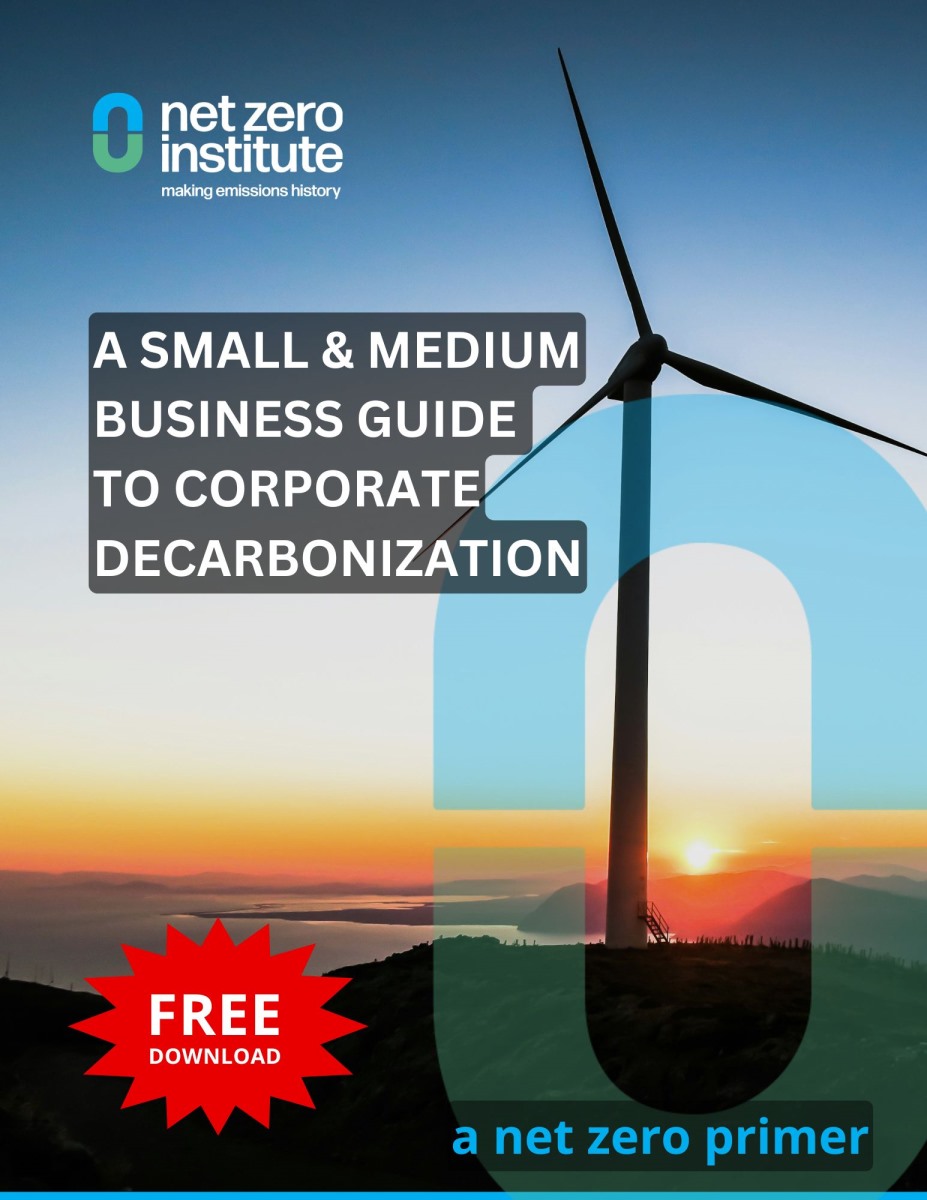What Exactly is this Greenhouse Gas Protocol: Your Essential Guide to Emissions Measurement

As organizations embark on their sustainability journey, one framework consistently rises above the rest as the global gold standard for measuring and managing emissions: the Greenhouse Gas Protocol (GHGp). Far from being just another set of guidelines, this framework is a proven compass, empowering 92% of Fortune 500 companies to chart their climate strategies with confidence and clarity. The GHGp serves as a foundation for a business to map their emissions impact, measure progress, and take meaningful action toward a more sustainable future.
The GHGp doesn’t just help organizations comply with reporting standards—it’s a tool for identifying opportunities, driving innovation, and building trust with stakeholders. So, what exactly is this framework, and why is it essential for success in today’s world? Let’s dive in.
The basics: what is the GHG protocol?
Think of the GHGp as the universal language for emissions accounting. Developed in 1998 through a collaboration between the World Resources Institute (WRI) and the World Business Council for Sustainable Development (WBCSD), it provides the structured methodology businesses need to quantify their climate impact.
To put it in perspective, the GHG Protocol is to sustainability what GAAP is to financial reporting—a standardized system that brings credibility and comparability to emissions data.
Breaking down emissions scopes: what they mean for your business
When it comes to measuring emissions, the Greenhouse Gas (GHG) Protocol organizes them into three categories or “scopes.” These scopes are the foundation for understanding where emissions come from and how they can be managed. Let’s break it down.
Scope 1
More simply known as direct emissions. These are emissions that come directly from sources owned or controlled by your organization. Think of it as the emissions you have the most control over.
Examples include:
- Fuel burned in company-owned vehicles.
- Gas-powered generators in data centers.
- On-site heating systems for offices or facilities.
For businesses in technology or IT as an example, Scope 1 emissions might include backup diesel generators that keep data centers running during power outages. Monitoring and reducing these emissions often involves transitioning to cleaner fuel sources or optimizing energy efficiency in your operations.
Scope 2
Scope 2 is also known as indirect emissions. This category of emissions are tied to the electricity, heating, cooling, or steam your organization buys to power its operations. While these emissions aren’t produced directly by your organization, they result from the energy generation process and are still part of your footprint.
For data centers and IT companies, again in this example, it is often a significant category. The electricity required to keep servers running and cool in a high-demand environment adds up quickly. Companies focusing on Scope 2 reductions typically look to:
- Transition to renewable energy sources.
- Improve energy efficiency through smarter infrastructure design.
- Partner with energy providers who prioritize clean energy.
Scope 3
This is more simply stated as value chain emissions. Scope 3 emissions are the broadest and often the largest category. These include all other indirect emissions that occur across your organization’s value chain. While these emissions are harder to measure and manage, they also represent the biggest opportunity for impact.
Scope 3 examples for the technology sector include:
- The carbon footprint of manufacturing and transporting servers or hardware.
- Emissions from the use of IT products by customers, like the energy consumed to run cloud-based services.
- Business travel and employee commuting.
For many organizations, Scope 3 emissions make up 70–90% of their total footprint. Addressing them often requires engaging suppliers, designing more efficient products, and collaborating with customers to optimize energy use.
What are the #BrassTacks and why the GHG Protocol is essential now?
In today’s business landscape, the GHG Protocol is more than a tool—it’s a necessity for responsible business. Regulatory frameworks like the EU’s CSRD or ISSB and the myriad of other climate disclosures such as the CDP or TCFD, the bar is rising on transparency, while investors and customers are demanding accountability.
Measuring your emissions is about more than just numbers—it’s about taking control of your sustainability journey and creating real impact. Here’s how understanding your emissions by using the GHGp helps your business be more successful:
- Spot emissions “Hotspots” and identify your biggest impacts
Not all parts of your operations contribute equally to your emissions. Some areas, like energy-intensive data centers or transportation, might have a much larger footprint than others. By identifying these “hotspots,” you can focus your efforts where they’ll make the biggest difference. - Mitigate risks and be ready for disruptions
Climate change can bring unexpected challenges—think extreme weather affecting your energy supply or disruptions in your supply chain. Understanding your emissions helps you plan ahead, making your operations more resilient and less vulnerable to these risks. - Cut carbon by targeting meaningful reductions
Once you know where your emissions come from, you can start reducing them. This could mean switching to renewable energy, improving efficiency, or working with suppliers to create more sustainable practices. Every small step adds up to big results over time. - Lets build trust and show that you are serious about sustainability
Customers, employees, and investors are paying attention to what businesses are doing about climate change. Sharing your progress on reducing emissions shows you’re transparent and committed to making a difference. This builds trust and strengthens your reputation. - It is your time to shine! Stay ahead of regulations and be prepared
Governments are introducing more laws and voluntary reporting is increasing to make businesses accountable for their emissions. By understanding your carbon footprint now, you’ll be ready to comply with new regulations and stakeholder disclosures before they become mandatory. This proactive approach can save you time, money, and stress in the future.
By focusing on these five areas, you’re not just reducing emissions—you’re making your business stronger, more adaptable, and ready for the future. It’s about doing the right thing while setting your company up for success in a world that values sustainability.
This still seems complicated and unapproachable, so now what?
It’s not as hard as you might think and no you do not need an advanced degree to understand it. The GHGp is just a set of rules or instructions that help organizations measure their greenhouse gas emissions. Think of it like counting calories if you’re on a diet—you need to know what you’re consuming before you can make changes. The GHG Protocol helps businesses figure out where their emissions are coming from so they can make informed decisions to reduce them.
#FiveSteps for your success!
- Relevance: Make sure you’re measuring emissions that actually matter to your business. For example, if you run a company with offices and delivery trucks, you’d want to measure emissions from both.
- Completeness: Don’t leave anything out. Include all the emissions from the parts of your business you’re focusing on, like electricity use, fuel for vehicles, or even emissions from your suppliers.
- Consistency: Use the same methods every time you measure, so you can see if your emissions are going up or down over time.
- Transparency: Be clear about how you’re measuring and calculating emissions. Keep records so others can understand your process.
- Accuracy: Make sure your numbers are as correct as possible—don’t overestimate or underestimate your emissions.
Now let’s make #shift happen…
Starting your GHG Protocol journey doesn't have to be overwhelming. Don’t let it be, you got this! Take it step by step:
- Define Boundaries: Decide which parts of your business to include. For example, you might start with your office buildings and delivery fleet.
- Collect Data: Gather information like utility bills for electricity, records of how much fuel you’ve used, or invoices from suppliers.
- Calculate Emissions: Use tools or calculators to turn that data into emissions numbers. For example, you can look up how much carbon dioxide is produced per kilowatt-hour of electricity used.
- Document Your Methods: Write down how you’re measuring and calculating emissions so you can do it the same way next time.
- Verify Data: Double-check your work to make sure your numbers are correct. This could mean having someone else review it or using a third-party service to verify your results.
Should you expect challenges?
Of course, everything comes with its challenges but power through. Getting started might feel overwhelming, and that’s okay. You might come across incomplete data as it is common practice not to have all the information you need right away. Start with what you have—like your utility bills—and expand as you go.
Business complexities can certainly create challenges. If your business has many moving parts, focus on the most important areas first, like energy use or transportation. Feeling overwhelmed yet? Remember, you don’t have to be perfect. Every small step you take COUNTS!
Ready, Set….. GO!
Measuring your emissions is more than just a starting point—it’s the first step toward meaningful transformation. Now that you are armed with this knowledge, you can set bold goals that focus your efforts where they matter most. From switching to renewable energy to reducing fuel use, every action you take brings you closer to a cleaner, more sustainable future. As you progress, sharing your achievements with employees, customers, and stakeholders not only builds trust but inspires others to join the journey. Understanding your emissions is the gateway to real climate impact, and every step forward is a step toward a better tomorrow. The future is in your hands, now go make it happen!
 Mike Mattera, Director of Corporate Sustainability and ESG Officer of Akamai Technologies, is an advisor to the Net Zero Institute. This blog touches on key aspects of the Greenhouse Gas (GHG) Protocol, which we explore in greater detail through our exclusive member resources. From Insight Briefs that break down complex issues to on-demand workshops and other resources, we provide the tools and guidance to help you navigate every step of your journey. To access these resources and join a network of leaders committed to a net-zero future, we invite you to become a member today.
Mike Mattera, Director of Corporate Sustainability and ESG Officer of Akamai Technologies, is an advisor to the Net Zero Institute. This blog touches on key aspects of the Greenhouse Gas (GHG) Protocol, which we explore in greater detail through our exclusive member resources. From Insight Briefs that break down complex issues to on-demand workshops and other resources, we provide the tools and guidance to help you navigate every step of your journey. To access these resources and join a network of leaders committed to a net-zero future, we invite you to become a member today.
